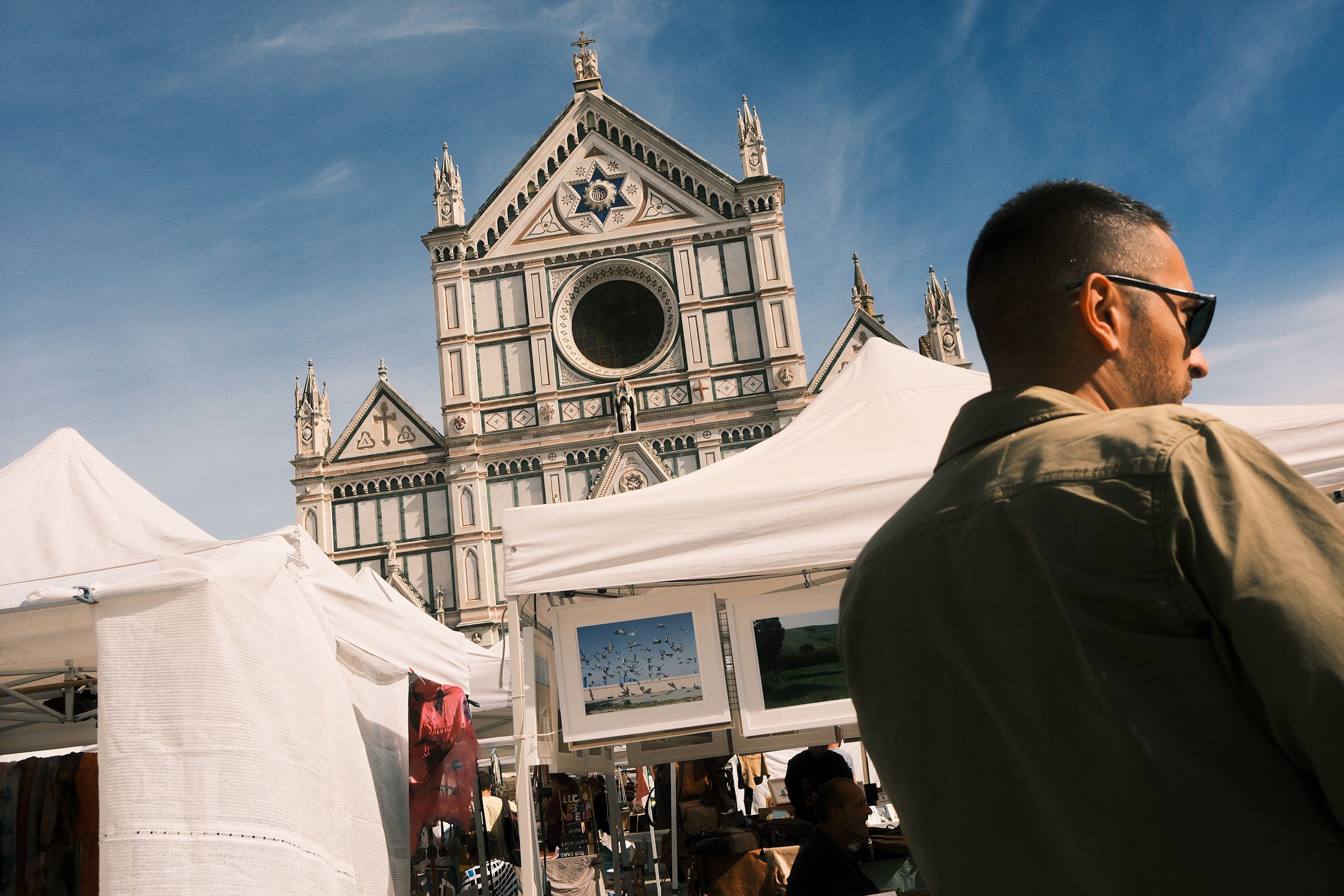Common Photography Discussions Around Street and Travel Photography
Basilica of Santa Croce, Florence - 2024
Since I started exploring photography and learning about the science and technique, there have been some rules that I was initially led to understand as non-negotiable. But today, I know that is untrue, mainly because of my experience and technological improvements that have allowed us to move away from some of them. That includes the belief that the higher the megapixel count, the better, and that the histogram is your source of truth for perfectly exposed photos.
Today, with so many sources at our fingertips and countless influences being presented to us, it’s more complicated than ever to determine what has some truth behind it. Is it a rule because one person you follow said so? Is it their rule? Or is it more widely accepted? Let’s look at recent discussions and topics.
Gear Doesn’t Matter
It’s easy to find this sentiment in photography discussions, and there is some truth to it. However, it’s vital to understand where these thoughts come from, as I believe gear does indeed matter.
Firstly, let’s discuss how gear has improved, especially in camera technology. The latest cameras have a wealth of technology crammed inside, and digital cameras, generally, have seen significant improvements over time. We see better sensors, low-light performance, video capabilities, AI capabilities, and in-body stabilization improve. But today, distinguishing between a photo taken with one camera and one with another can be difficult. The variety of innovations introduced and improved upon can be beneficial, but chances are, you can succeed without them, and you probably already have been. New cameras tend to improve only slightly on what was already pretty good or introduce features that are useless to you or forgotten quickly. Today, most cameras are good; many are great, and improving on great is challenging. You may have to spend thousands of dollars to acquire something that stands out.
It’s easy to be enticed to get new gear; hundreds of YouTube channels focus on gear reviews alone. However, a camera 2-3 years old will be adequate, and a camera 4-5 will probably get the job done. Unless you revel in being the first on the block, want a particular brand, or are incentivized to have the latest camera, it is mostly irrelevant and impossible to keep up with.
However, a new camera can matter. When you get a new camera, you are excited, and having a camera that you feel is capable of more can increase your confidence behind the camera, your willingness to shoot more, and your feelings about your photography. That is an essential characteristic of acquiring a newer, more capable camera. It can improve your photography aesthetically, but it can also significantly improve your mental state and drive towards the act of photography.
High ISO is Bad
Specific genres demand the cleanest, noise-free images, and increased ISO introduces more noise. High ISO can be harmful, but unless you truly push the ISO, this photography aspect is largely forgotten now with the capabilities of today’s cameras. Earlier cameras used to have limited capacities for handling noise. The sensors were just not that sophisticated compared to today’s cameras. As a result, increasing the ISO even a bit could be dramatic.
I remember my first DSLR, a Canon Rebel, being terrible at handling noise. Even going from 100 to 200 ISO was a scary thought. At 400 ISO, it started to get messy. Today, any camera can handle noise without much issue, and using an auto ISO setting is much more commonplace.
You Need to Shoot RAW
RAW is the most flexible file you can capture, and if you plan to spend hours tweaking every little aspect of the photo to get the cleanest, most dramatic photo, then you should capture RAW. Sometimes, having that flexibility is necessary. However, JPEG images are excellent. Today’s cameras can capture amazing JPEG files, and they have advantages. You don’t need to capture RAW to capture great photos. Furthermore, using film recipes and film simulations, you can capture unique, personal images without using any post-processing software to achieve them. JPEG has been seen as the lesser of the two by some, but capturing in JPEG format can help you explore new styles that you may have never attempted with RAW.
Wide Apertures are Best
Fujinon XF 35mm f/1.4 lens is currently $799.99 CA. The Fujinon XF 35mm f/2 lens is $539.99 CA—a difference of $260. The higher the aperture, the more expensive the lens. This is only one example of this. The advantage of having a higher aperture lens is better low-light performance, a more shallow depth of field, and faster shutter speeds. I will state that yes, these are advantages, but these advantages can go unused 90-95% of the time. Of course, this depends on what you are shooting and your primary photography subjects, but the advantages will rarely be utilized if you are doing street or travel photography. If you find a fantastic deal on a high-aperture lens, consider that purchase. However, in my experience, I have never needed anything more than an f/2 in my travels and have rarely shot at that aperture. I have used it for some detail shots, but I usually shoot around f/8. Considering a lower aperture lens is a great way to save money.
Conclusion
There are many discussions around photography, and there are differing opinions. Those opinions change and progress over time. My thoughts may change over time, too. Still, it’s essential to understand that the only thing that matters is that you find joy in your photography and continue to pursue your craft meaningfully. The art of photography is a continuing journey, and you can follow that with any investment you want, any lens you prefer, and any camera that makes a difference to you.
